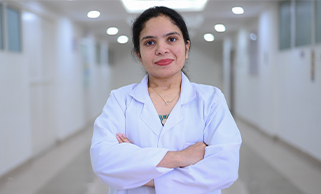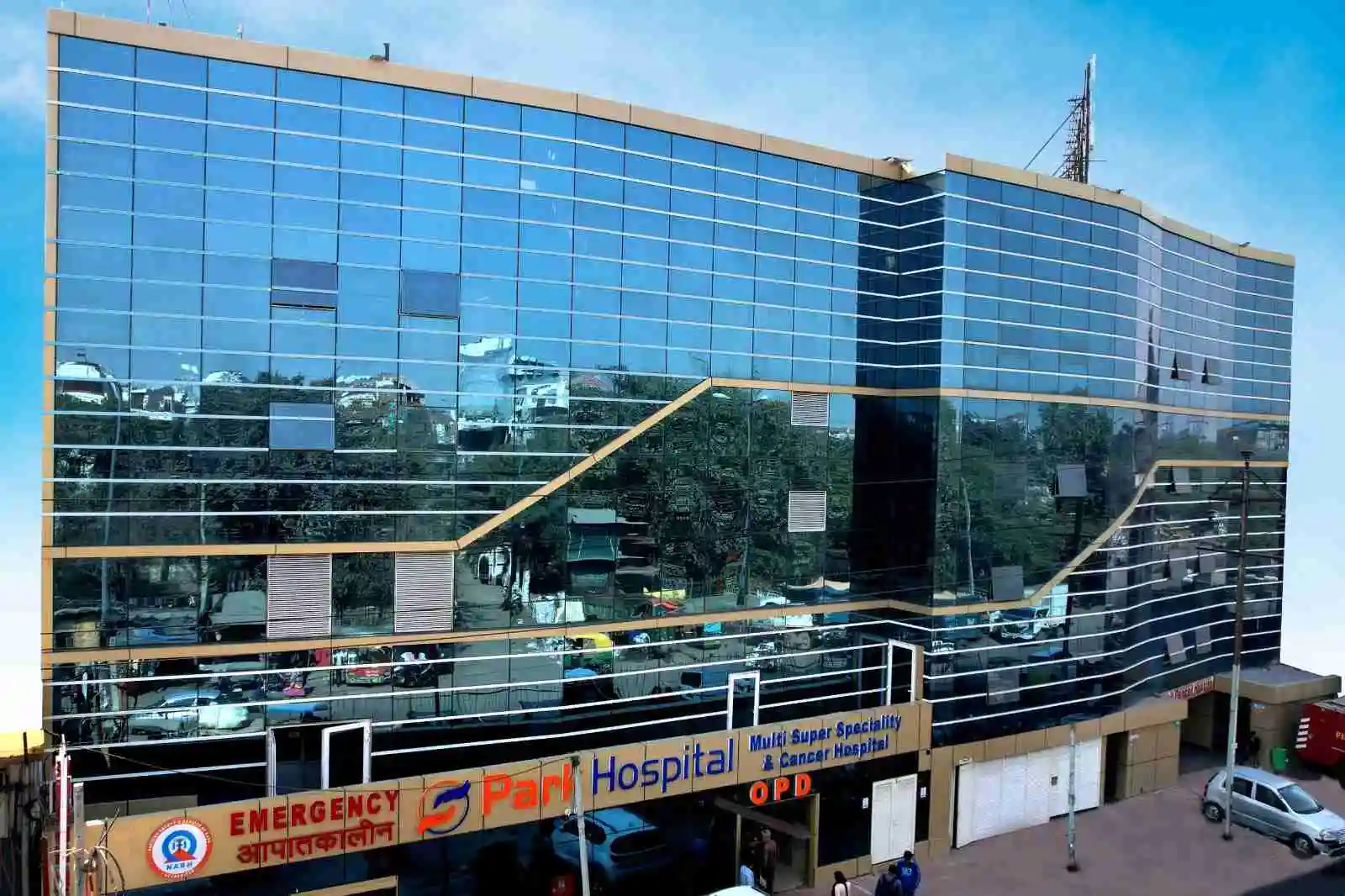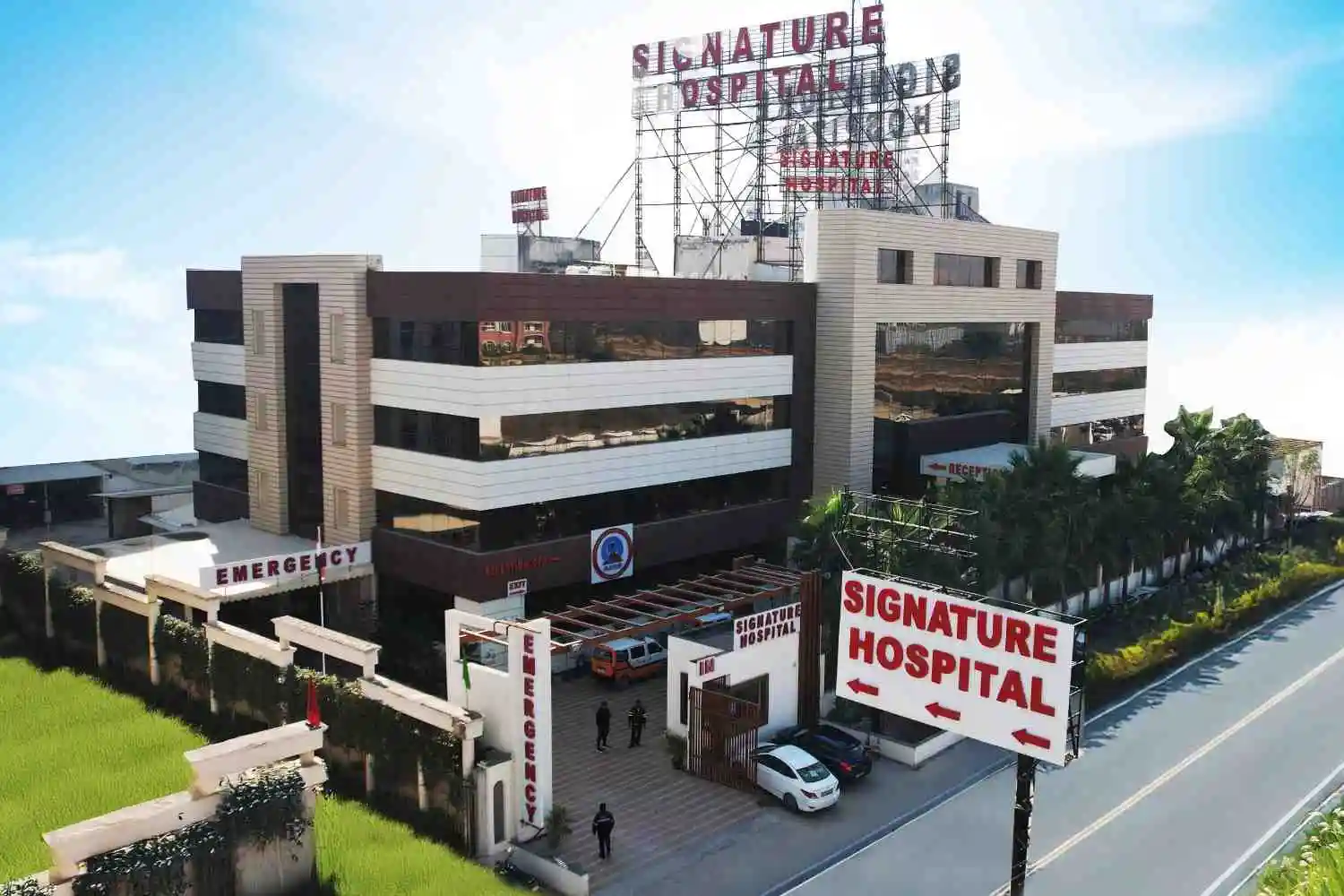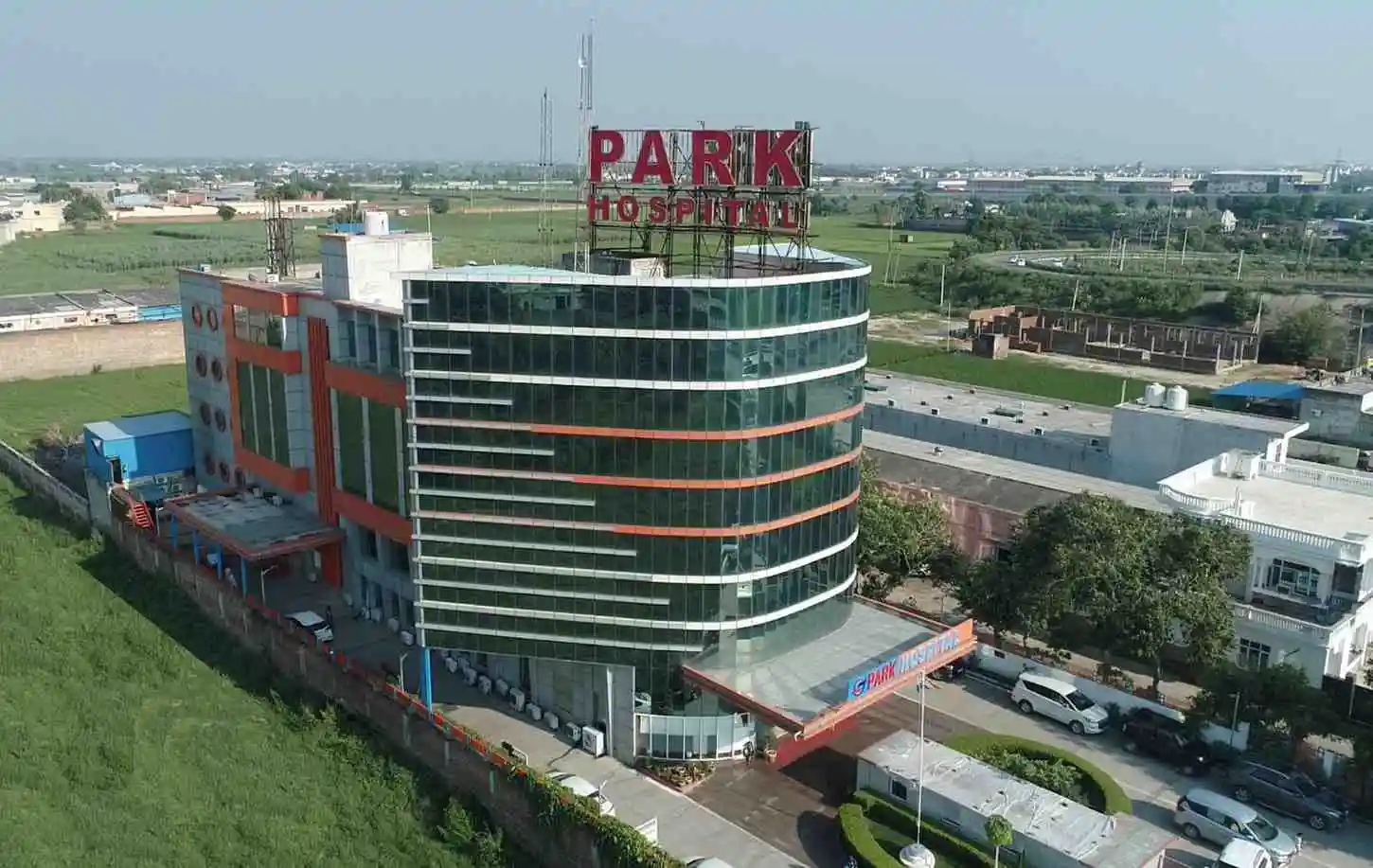Fertility Management
Fertility Management is a varied field which deals with a wide range of fertility problems in both men and women. It ranges from everything to artificial insemination, to surgeries that countermand fertility problems in men and women, to counselling and recuperation as fertility treatments are mostly long lasting and taxing on an individual’s mental and physical health. Park Hospital, Patiala is the premier facility for the treatment of all fertility related problems under one roof. Fulfill your dream of extending your family under the care of world class amenities and the guidance and experience of the best team of fertility specialist in country.
Salient Features of Fertility Management Department
1. Ovulation Induction
Ovulation Induction (OI) is one of the most sought-after fertility treatments. In Ovulation Induction process medications are used to cause or regulate ovulation, or increase the number of eggs produced during a cycle, to increase the opportunity for pregnancy, whether normal or assisted.
Application and Procedure of Ovulation Induction
Ovulation Induction treatment is usually recommended for:
1. Women with unexplained infertility.
2. Women with long, irregular or infrequent cycles.
3. Women who are not spontaneously ovulating.
4. Couples with male-factor infertility.
Ovulation Induction consists of three procedures:
1. Stimulation- In this process the ovaries are stimulated with medication to assist the growth of follicles which produce the eggs.
2. Monitoring- The ovarian response is monitored via ultrasounds and blood tests to control the quantity and quality of the follicles
3. Egg Release- An injection of HCG hormone is given to the patient is administered to assist with the maturation and release of the eggs from the follicles
Timed sexual intercourse or IUI (Intrauterine Insemination) is suggested after the procedure to the couple depending on the severity and situation.
Some women may experience an excessive response by their ovaries to fertility drugs. Ovarian hyperstimulation syndrome (OHSS) might occur in a minority of women who over respond to the medication.
2. Intrauterine Insemination (IUI)
Intrauterine insemination (IUI) — a type of artificial insemination — is a procedure for treating infertility. As the name suggests IUI is a method of assisted reproduction in which a lab prepared semen sample is deposited inside the woman’s uterus. The onus is on to keep the fertilisation process as natural as possible. The deposited sperm is made more effective by increasing its concentration and thus has a higher chance of fertilising the egg.
Application and Procedure of IUI
IUI treatment is used mainly in following cases: -
1. Mild male factor infertility
2. Male ejaculatory problems
3. Unexplained infertility- It happened when doctors cannot ascertain a specific cause for inability to get pregnant.
4. Unreceptive cervical mucus- In this case the mucus that surrounds the cervix prevents sperm from getting into your uterus and fallopian tubes.
5. Serodiscordancy- It means both the parents are infected with either HIV or hepatitis.
The rate of success of intrauterine insemination treatment in first cycle is around 18%-20%.
Intrauterine Insemination procedure involves installation of washed and concentrated semen samples into a woman’s uterus, around the time the egg is ready for rupture or has ruptured within the last 24 hours. The hoped-for outcome of intrauterine insemination is for the sperm to swim into the fallopian tube and fertilize a waiting egg, resulting in pregnancy.
3.In-Vitro Fertilization (IVF)
In-Vitro fertilization or IVF is the most effective and successful assisted reproductive technology till date. Now, a commonly popular term and a widely used procedure; IVF has come a long way from being the mysterious procedure which created the test tube babies.
Unlike the simpler process of artificial insemination -- in which concentrated sperm is placed in the uterus and conception is allowed to happen as naturally as possible-- IVF involves combining eggs and sperm outside the body in the laboratory.
Once the embryo develops after fertilization then it is placed inside the uterus. The procedure could be done using the parents’ own egg or sperm or that of a donor.
In case of inability to carry an embryo in the uterus, a gestational carrier (someone who has the embryo implanted inside their uterus) is used.
Application and Procedure of IVF
IVF treatment is used mainly in following cases: -
1. Endometriosis- A disorder in which tissue similar to the tissue that normally lines the inside of your uterus — the endometrium — grows outside your uterus)
2. Low sperm count
3. Ovulation problems
4. Unexplained infertility- It happens when doctors cannot ascertain a specific cause for inability to get pregnant.
5. Unreceptive cervical mucus- In this case the mucus that surrounds the cervix prevents sperm from getting into your uterus and fallopian tubes.
IVF is never the first-choice treatment for infertility except in case of complete fallopian blockage. It is used for cases in which other methods such as fertility drugs, surgery, and artificial insemination haven't worked.
Intracytoplasmic Sperm Injection (ICSI)?
Intracytoplasmic Sperm Injection (ICSI) is a procedure which is done either in accordance with IVF or if IVF does not work. The key difference between IVF and ICSI is how the sperm fertilizes the egg. As the name suggests, in Intracytoplasmic Sperm Injection, a single sperm is directly injected into the egg to fertilize.
The healthiest and most potent sperm is chosen via a method called IMSI (Intracytoplasmic Morphologically Selected Sperm Injection) which uses a high-powered microscope to select sperm with the best morphology and the lowest amount of fragmentation to fertilize with eggs.
ICSI has a greater chance of success than IVF.
4. PCOS/PCOD Management
Polycystic ovary syndrome (PCOS) is a hormonal disorder which is common among women of reproductive age i.e., age 15 to 44.
Women who have PCOS may undergo irregular or sometimes prolonged menstrual periods or excess male hormone (androgen) levels. The ovaries may also develop numerous small collections of fluid (follicles) and fail to regularly release eggs for fertilization.
The exact cause of PCOS yet remains unknown. Early detection and treatment of PCOS can help stop further complications arising which include heart condition and type 2 diabetes.
Difference between PCOS and PCOD
Polycystic Ovarian disease (PCOD) is a condition which is often confused with PCOS. Although these two conditions are similar there are some marked differences.
PCOD is more common than PCOS and does not affect the fertility as much, because unlike in PCOS the ovaries do not stop producing eggs in PCOD. They might produce immature and partially mature eggs. PCOD happens due to poor lifestyle, obesity, stress and hormonal imbalance. PCOD also does not lead to severe complications like PCOS.
Thus, one can say that PCOS is a much severe form of PCOD in terms of effects.
Causes and Symptoms
Although exact causes for PCOS have not been found, there are some significant factors which are believed to contribute to it: -
Excess hormone production like Insulin or Androgen
1. Low grade inflammation
2. Hereditary Causes
Following are the symptoms of PCOS: -
1. Irregular or skipped menstruation
2. Heavy menstrual bleeding
3. Excessive Hair growth due to increased testosterone levels
4. Acne and bad scalp
5. Rapid weight gain
6. Pelvic pain
7. Fatigue
Some women start seeing symptoms of PCOS around the time of their first period, some women only discover them when they have gained a lot of weight or are having trouble getting pregnant.
Diagnosis and Treatment
Depending on the occurrence of symptoms the doctor might recommend following steps to determine the severity of PCOS.
1. Pelvic examination
2. Blood tests: Blood tests will help to understand the hormone levels
3. Imaging test: Ultrasound imaging test to check the size of ovaries, the lining of uterus and cysts in ovaries
4. Periodical monitoring of blood pressure, glucose tolerance, cholesterol and triglyceride levels
5. Screening for anxiety and depression
6. Screening for obstructive sleep apnoea (OSA)
Like diagnosis, the treatment of PCOs also depends on the patient’s individual symptoms as symptoms are numerous and can vary widely. Treatment usually starts with lifestyle changes to focus on the weight loss as it helps a lot in regulating menstrual cycle and complications like heart disease, diabetes, breathing problems etc.
Fibroid Management
Also known as leiomyomas or myomas, uterine fibroids are noncancerous growths of the uterus that often appear in the uterus during the childbearing period. It has no connection to uterine cancer.
Fibroids range from microscopic to bulky growth that can distort and enlarge the uterus. You can have a single fibroid or multiple ones. Most women have a growth of fibroids once in their lifetime. But they are hard to diagnose as they usually have no symptoms.
Symptoms, Causes and Types of Fibroids
In a few women where the symptoms of fibroids are visible, they are:
1. Heavy menstrual bleeding
2. Menstrual periods lasting more than a week
3. Pelvic pressure or pain
4. Frequent urination
5. Difficulty emptying the bladder
6. Constipation
7. Backache or leg pains
The actual causes of fibroid growth have not been found by experts, but some of the factors which are thought to cause uterine fibroids are:
1. Genetic changes - Many fibroids contain changes in genes that differ from those in typical uterine muscle cells.
2. Hormones- Oestrogen and progesterone are the two hormones that stimulate development of the uterine lining during each menstrual cycle in preparation for pregnancy. Fibroids contain more oestrogen and progesterone receptors than typical uterine muscle cells do.
3. Extracellular matrix (ECM)- ECM is the material that makes cells stick together, like mortar between bricks. ECM is higher in fibroids and makes them fibrous.
Many fibroids that have been present during pregnancy shrink or disappear after pregnancy, as the uterus goes back to its usual size
Fibroids usually don’t have much effect on pregnancy. However, it's possible that fibroids — especially submucosal fibroids — could cause infertility or pregnancy loss.
Fibroids may also raise the risk of certain pregnancy complications, such as placental abruption, foetal growth restriction and preterm delivery.
The treatment of Fibroids may include medications, non-invasive or minimally invasive surgery or laparoscopic surgery.
Medications for uterine fibroids target hormones that regulate your menstrual cycle, treating symptoms such as heavy menstrual bleeding and pelvic pressure. They don't eliminate fibroids but make them shrink.
Oncofertility
Oncofertility refers to the medical field that combines the fields of oncology (means the study of tumours) and various fertility treatment methods with the purpose of maximizing the reproductive potential of cancer patients and survivors.
Cancer treatments, especially chemotherapy, radiation, and surgery can impair or destroy a person's ability to have children later in life. In women, these therapies cause ovarian damage that can lead to genetically damaged oocytes (eggs), ovarian failure, early menopause, or other reproductive problems.
In men, cancer treatments can similarly cause damage to the testes that interfere with sperm production and testosterone secretion.
In recent years, we have witnessed a growing interest in the prevention of the loss of reproductive efficacy in young women as a result of cancer or its treatments. The techniques used to ensure that cancer survivors are able to reproduce and conceive come under oncofertility preservation.
Techniques used for Oncofertility preservation
There are multiple treatment options e which exist that can increase your future fertility potential. A fertility or endocrinology expert must be immediately consulted after the diagnosis of cancer, and preferably prior to chemotherapy or pelvic radiation.
Some of the fertility techniques used are: -
1. Shielding of the genital and pelvic region with a lead apron during radiation therapy to minimize the damaging effects of ionizing radiation on the ovaries and testes.
2. Ovarian Transposition to physically move the ovaries out of the pelvis through surgical techniques in cases where pelvic radiation is required.
3. Oocyte cryopreservation allows women to have their eggs preserved for future use.
4. Embryo and Sperm Banking can also preserve embryos and semen samples to be used later.
5. Tissue banking where ovarian cortex or testicular tissue is surgically removed and frozen. This tissue can later be transplanted back into the body and hormonally stimulated to produce eggs and sperm with some success when the patient is ready to conceive.
Gamete donation and surrogacy are some of the other treatment options for people whose reproductive ability have damaged beyond repair due to cancer treatment.
Laparoscopy
Laparoscopy is a type of surgical procedure that allows a surgeon to access the inside of the abdomen (tummy) and pelvis without having to make large incisions in the skin. This procedure is also known as keyhole surgery or minimally invasive surgery. Laparoscope is a small tube that has a light source and a camera, which relays images of the inside of the abdomen or pelvis to a television monitor. It allows for detailed inspection of female pelvic organs like uterus, cervix, fallopian tubes, and ovaries.
Dye is instilled into uterine cavity to see spillage into pelvic cavity through fallopian tubes. This helps to test the patency of the fallopian tubes which means to check if the fallopian tubes are unobstructed.
The advantage of laparoscopy over other methods of tubal patency procedure is that it allows for corrective procedures or treatments at the same time as the diagnostic procedure. The other advantages are less scarring as the surgical cuts are smaller and a faster recovery time. A due consent form stating all possibilities is a must prior to any such procedure.
Why is laparoscopy done?
Laparoscopy in infertility patients is often recommended, as it is the most reliable way to check the health of the pelvic organs. Laparoscopy is also done to treat certain conditions such as ovarian cyst, endometriosis, fibroids, adhesions which can be the cause of infertility.
Hysteroscopy
Hysteroscopy is an endoscopic procedure used to visualise the inside of the uterus (uterine cavity) by the means of a telescopic camera. The procedure is named after hysteroscope- a thin tube with light on the end which is inserted into the uterus via vaginal cavity.
Hysteroscopy is a very important procedure in assisted reproduction techniques as the implantation of embryo happens in uterine cavity. This procedure helps to identify if there are any intrauterine causes to the implantation failure. It is also used to diagnose various abnormalities and conditions which can lead to infertility.
Procedure and precautions
The procedure of hysteroscopy involves inserting the hysteroscope within the uterine cavity with lens fitted on it which in turn is connected to a screen. The camera is passed through the vagina, through the cervix, and into the cavity of the uterus. It can be done with or without anaesthesia. Medicine might be given to patient to make them relax.
The interior of the uterus is seen through the scope introduced. It involves inflation of the uterus with saline solution or gas which in turn helps to clearly inspect interior of the uterus and its lining (Endometrium), openings of the fallopian tubes from inside and any abnormalities within the uterus.
Common abnormalities seen within the uterus are –
1. Polyps
2. Adhesions
3. Scarring/fibrous coating of the uterine cavity
4. Septum-incomplete or complete
5. Fibroids- submucosal.
Just like any medical procedure, you could have some complications from a hysteroscopy, including:
1. Complications from the anaesthesia
2. Infection
3. Tearing or damage to your cervix although it is quite rare
4. Problems with gas or fluid from the uterus
5. Damage to nearby organs like the bladder, bowel, or ovaries
6. Pelvic inflammatory disease
One may have some mild cramping or bleeding for a few days after the procedure. The doctor may give you medicine to help with any pain and ask to refrain from any sexual intercourse for a while.
Cryopreservation
Cryopreservation is the use of very low temperatures to preserve structurally intact living cells and tissues. At low enough temperatures, any enzymatic or chemical activity which might cause damage to the biological material in question is effectively stopped. Traditional cryopreservation has relied on coating the material to be frozen with a class of molecules termed cryoprotectants.
The egg is the largest cell in the human body and contains a high amount of water. When the egg is frozen, the ice crystals that form can destroy the integrity of the cell. Cryoprotectants help dehydrate the cell which prevents the ice crystals from forming.
Oocyte Cryopreservation- Application and Procedure
Oocyte cryopreservation (egg freezing) is a medical procedure to preserve a woman's eggs at low temperatures so they can be used at a later date. Oocyte preservation enables women to postpone their pregnancy or save their eggs for later date as uterus remains functional in most elderly women.
The egg retrieval process for oocyte cryopreservation is the same as that for In-vitro fertilization (IVF). This includes one to several weeks of medication and HCG injections that stimulate the ovaries to produce many eggs.
Eggs (oocytes) are frozen using two methods. Either a controlled-rate, slow-cooling method or a newer flash-freezing process known as vitrification.
Vitrification is much faster but requires higher concentrations of cryoprotectants to be added. The breakthrough in achieving vitrification of a woman's eggs has enhanced greatly practice of the IVF process, as the clinical pregnancy rate is four times higher after oocyte vitrification than after slow freezing.
PESA/TESA
PESA stands for Percutaneous Epididymal Sperm Aspiration, and TESA stands for Testicular Sperm Aspiration. They are both sperm extraction procedure to treat male infertility.
While low quality and quantity of sperm may be the major causes of infertility in men, the inability to effectively ejaculate may also prevent a man from making a woman pregnant even after having unprotected sex. In cases where azoospermia, vasectomy and testicular tube blockages are involved, TESA and PESA are the most ideal treatment options available.
TESA is an assistive reproductive procedure that involves the retrieval of testicular tissue through a needle attached to a syringe and injected through the skin on the man’s scrotum. PESA involves collecting sperm via a small needle that is inserted into the epididymis.
TESA is usually a little more complex as compared to PESA and is performed if there is no sperm found within the epididymis.
Benefits of TESA and PESA
Most men who suffer from infertility usually assume that they are completely sterile while the underlying reason could just be a condition preventing sperms from getting out of their reproductive system during ejaculation. PESA and TESA will determine exactly where the issue is and solve it by retrieving sperm from the epididymis or testicles via a thin needle.

























